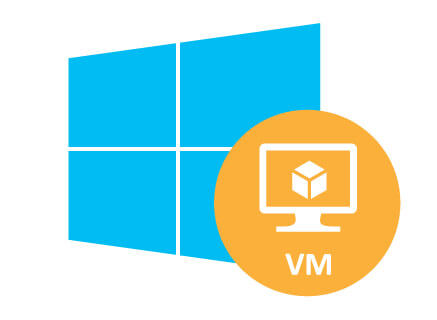You can control more than 20 screens installed on your network
Simply by adding more virtual machines, you can connect any number of screens on your network!


You can control more than 20 screens installed on your network
Simply by adding more virtual machines, you can connect any number of screens on your network!
Security
When using a physical PC, you can’t use the operating system’s capability to lock up the system and you need to use a workaround to lock the workstation. With a virtual machine, the main server can be locked up while the VM keeps on running in the background.
Better stability
With virtual machines there are almost no hardware incompatibilities so fewer issues can occur. Also, a clone machine can be easily created to enable a quick redundancy of the system.
Flexible
If you would like to have 5 screens controlled by one employee in your company and another set of 5 screens controlled by a different employee, it’s very easy to implement. Simply divide the screens into two virtual machines and give each employee an access to his private VM.
Operating systems
Currently the guest virtual machines can be installed only with the following operating systems:
Windows8.1, Windows10/11 or Windows Server 2012 R2, Server 2016, Server 2019, Server 2022
Supported Hypervisors
Our solution can be implemented on VMWARE’s platform, Microsoft’s Hyper-V, Parallels and Oracle’s VirtualBox.
System resources for the guest virtual machine
Planning the system resources assigned to the guest virtual machine is an essential step and we advise that you make use of our System Configuration Guide.
The recommend resources is related to :
– Number of screens that you connect.
– Type of content.
Minimum requirements:
– 4 logical cores
– 8GB RAM
– 128MB RAM for the virtual display adapter
Network Settings
When using HDMI over LAN zero clients (Centerm C75, Thinglobal MiniPoint) to access a virtual machine via vSphere, the mouse pointer does not function correctly.
Based on customer experience, installing the OSBASE driver on the VM makes it difficult to control the machine through the vSphere console. This is a known VMware issue, caused by their Keyboard and Mouse integration when the VM is in Extended Desktop mode.
To properly control the VM, use a remote control application that supports remoting the console session (not RDP). The following applications have been tested and confirmed to work:
To ensure stable performance, make sure the VM has adequate resources and is optimized for real-time video processing.
For detailed setup recommendations and troubleshooting, refer to this guide: